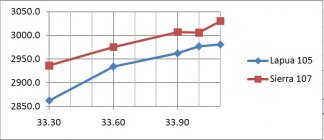BigBamBoo
Silver $$ Contributor
Re: ES and SD #'s & accuracy question **UPDATED**
**UPDATE**
Ok...went out this afternoon in the 95+ degree temps with a new batch loads. Tried three different charge weights with BR-2 primers and three more groups with same powder charge but with Wolf primers.
First the Wolf primers shot a bit better for me. All groups shot at 300 yards.
Below are the two best groups...the left hand target is with the lower ES and SD #'s...ES 17 and SD 6. As you see...not a very good group.
The right hand target has a ES 39 and SD 16. I had the one called flier...the mariage was pretty bad...but out side of that all other 4 shots pretty much ended up in the same hole.
So...again...it seems this rifle does not like the low #'s....after reading all the links,etc., I am more confused then ever.
Take care,Stan

**UPDATE**
Ok...went out this afternoon in the 95+ degree temps with a new batch loads. Tried three different charge weights with BR-2 primers and three more groups with same powder charge but with Wolf primers.
First the Wolf primers shot a bit better for me. All groups shot at 300 yards.
Below are the two best groups...the left hand target is with the lower ES and SD #'s...ES 17 and SD 6. As you see...not a very good group.
The right hand target has a ES 39 and SD 16. I had the one called flier...the mariage was pretty bad...but out side of that all other 4 shots pretty much ended up in the same hole.
So...again...it seems this rifle does not like the low #'s....after reading all the links,etc., I am more confused then ever.
Take care,Stan

















